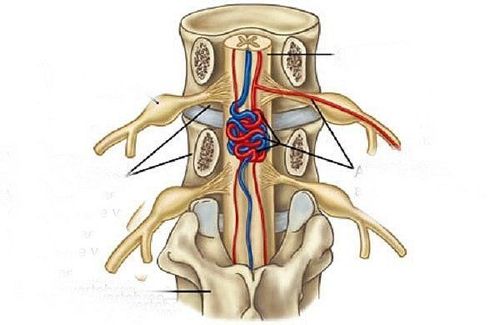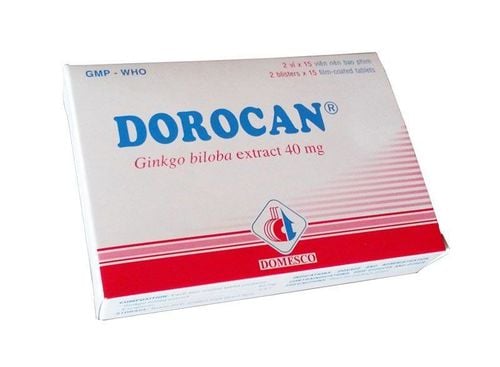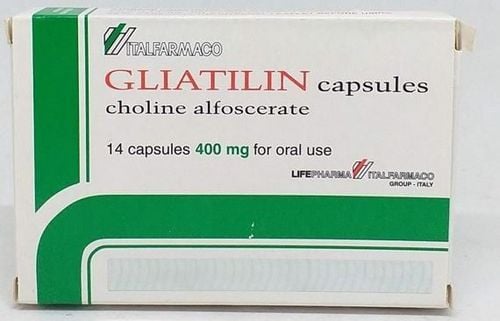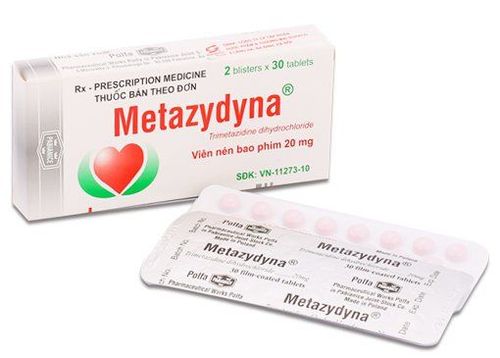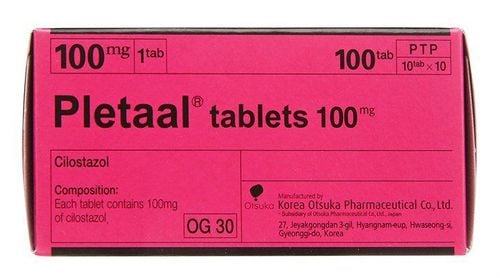This is an automatically translated article.
The article was written by MSc Vu Duy Dung - Doctor of Neurology, Department of General Internal Medicine - Vinmec Times City International Hospital.Although rare, vascular diseases of the spinal cord represent a group of potentially devastating diseases that can be challenging to diagnose but pay off when treatment. A keen understanding of when to think of a spinal vascular disease, and treatment options (often requiring a multimodal approach) is critical for optimal outcomes. preference for the patient.
This article first presents the anatomy and function of spinal cord blood vessels, providing a foundation of knowledge to understand the clinical and pathological manifestations of spinal vascular diseases, followed by is to review each specific disease.
1. Functional anatomy of spinal cord blood vessels
The blood supply to the spinal cord is complex and the collaterals are numerous, allowing for relative resistance to ischemia. This is followed by a description of the arterial system, beginning with the most distal segments and moving closer to the origin to the aorta.
A network of vessels rich in connections, which eventually radiate from branches along the length of an anterior spinal artery and a pair of posterior spinal arteries, supplying arterial blood to the adjacent spinal parenchyma artery edge. The anterior portion of this vascular network is supplied by the sulcocommissural artery, which enters the anterior medial cleft and arises directly from the anterior spinal artery. The arterial vasocorona connects the anterior and posterior portions of the vascular network, with its origin being the anterior and posterior spinal arteries, and supplies the lateral portion of the spinal cord.
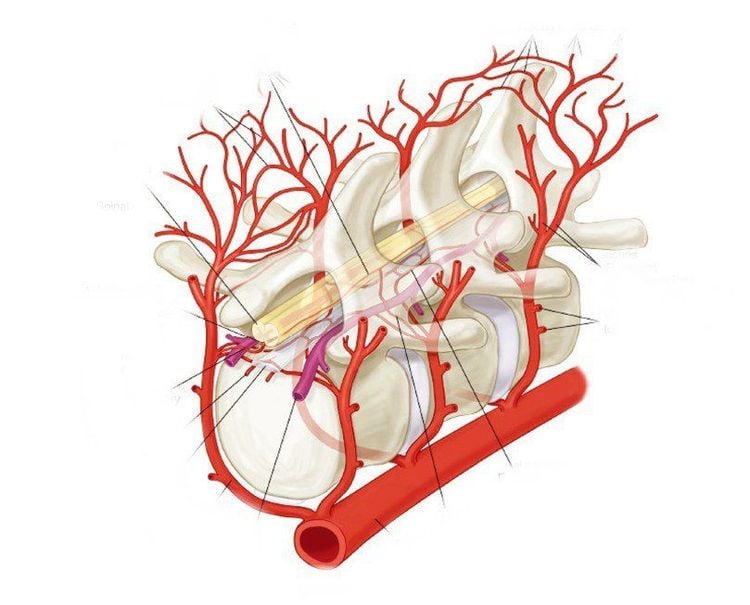
Going towards the common origin of the anterior spinal artery and the posterior spinal arteries, the cephalic parts arise from the distal end of the vertebral arteries and the caudal parts arise from the sacral artery.
Between these poles, the cervical and aortic branches contribute to the anterior and posterior spinal arteries, dividing into the anterior and posterior radial-medullary arteries at the intervertebral foramen .
Adamkiewicz's artery is the largest of these and usually arises from T9 to T12 and supplies mainly the lumbar spinal cord aneurysm. Borderline presumptive to midthoracic to superior thoracic medulla has not been demonstrated; The majority of spinal cord infarctions are due to hypoperfusion in the lower thoracic medulla.
The clinical presentation of acute spinal cord injury varies depending on which nerve bundle and the head/tail portion of the spinal cord are affected. In addition, lesions completely above C5 can cause weakness of the diaphragm, intercostal muscles, and abdominal muscles, which can lead to respiratory failure. Acute lesions at T6 or higher can lead to bradycardia and hypotension, which, in most severe cases, can lead to neurogenic shock due to damage to descending sympathetic fibers.

In contrast, an excessive sympathetic response to only a small harmful stimulus (eg, bladder distension) below the level of injury can develop subacutely in patients with lesions above T6 and is termed dysreflexia. vegetative nervous system. Bilateral damage to descending sympathetic fibers can also cause urinary retention and incontinence, constipation, and sexual dysfunction in the first place.
Please dial HOTLINE for more information or register for an appointment HERE. Download MyVinmec app to make appointments faster and to manage your bookings easily.
Articles refer to the source:
Kramer CL. Vascular Disorders of the Spinal Cord. Continuum (Minneap Minn) 2018;24(2, Spinal Cord Disorders): 407–426.





